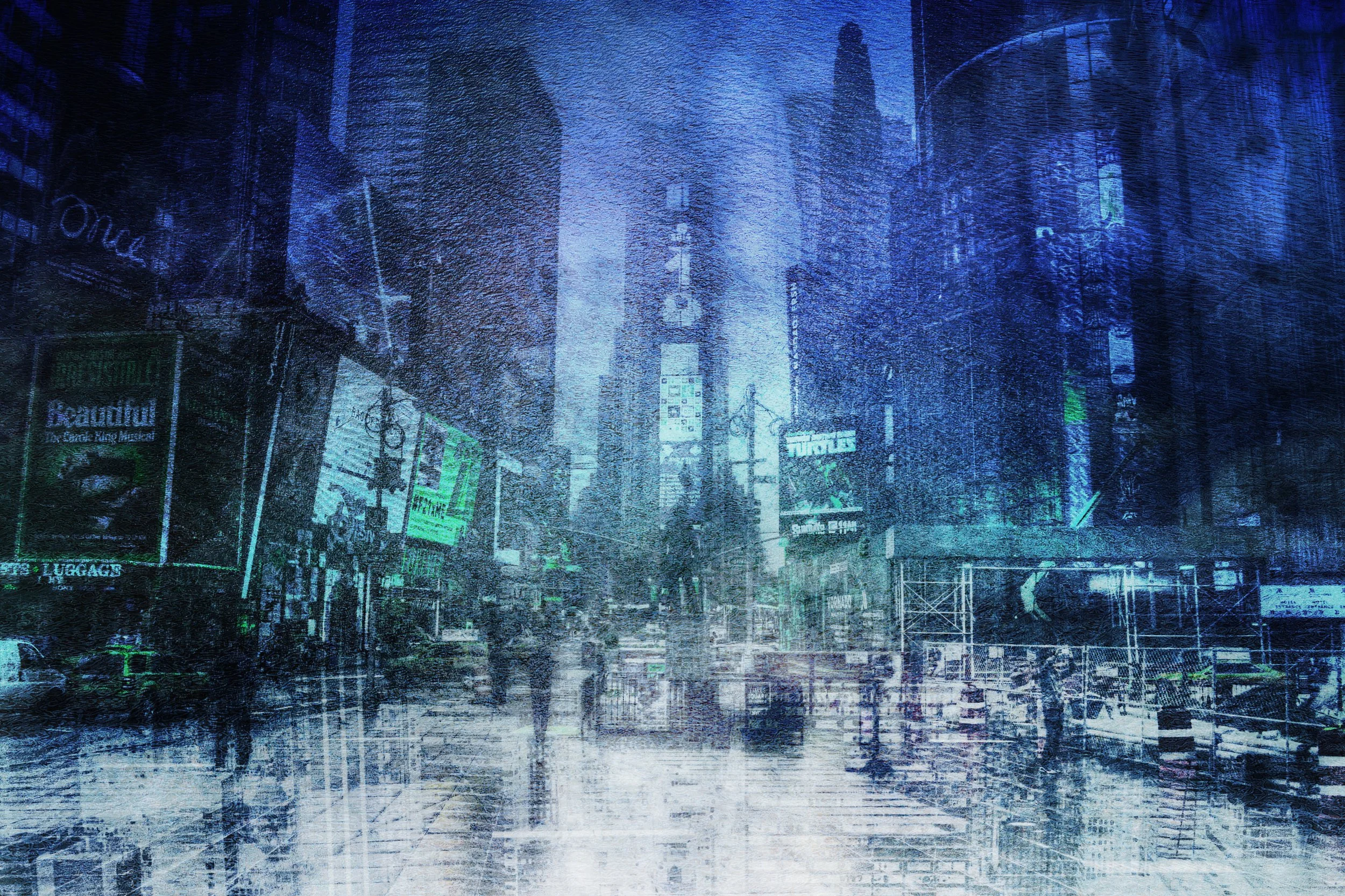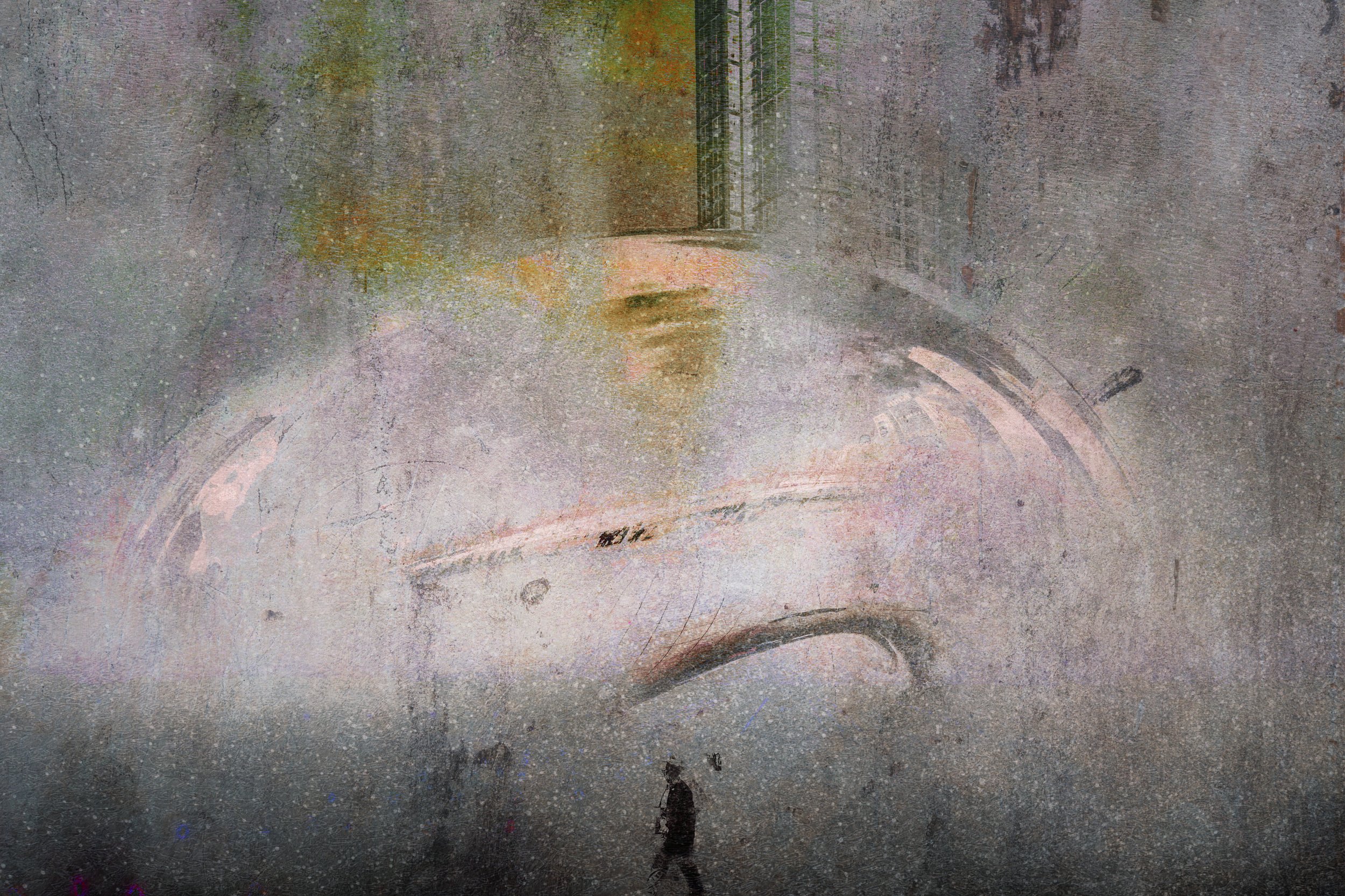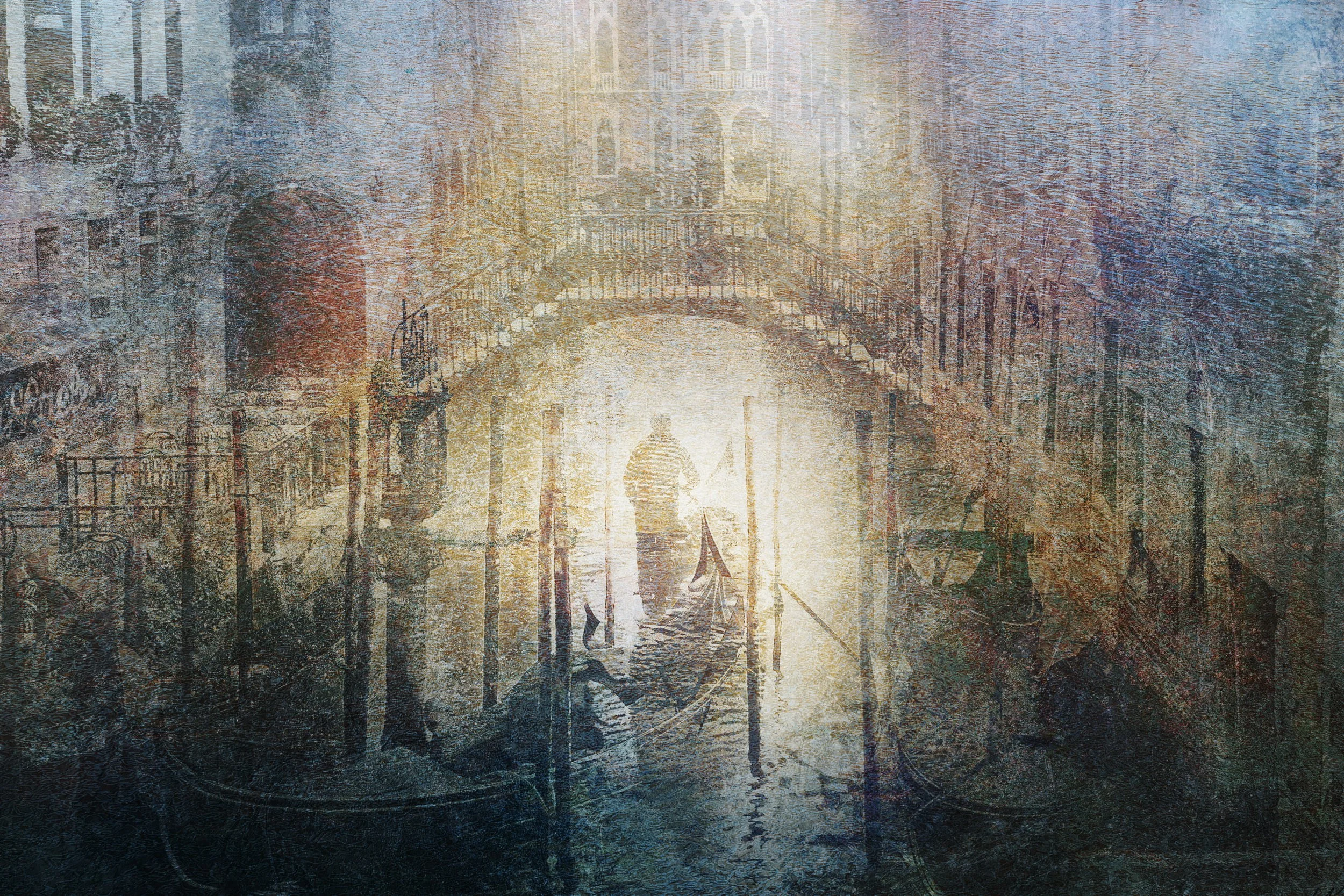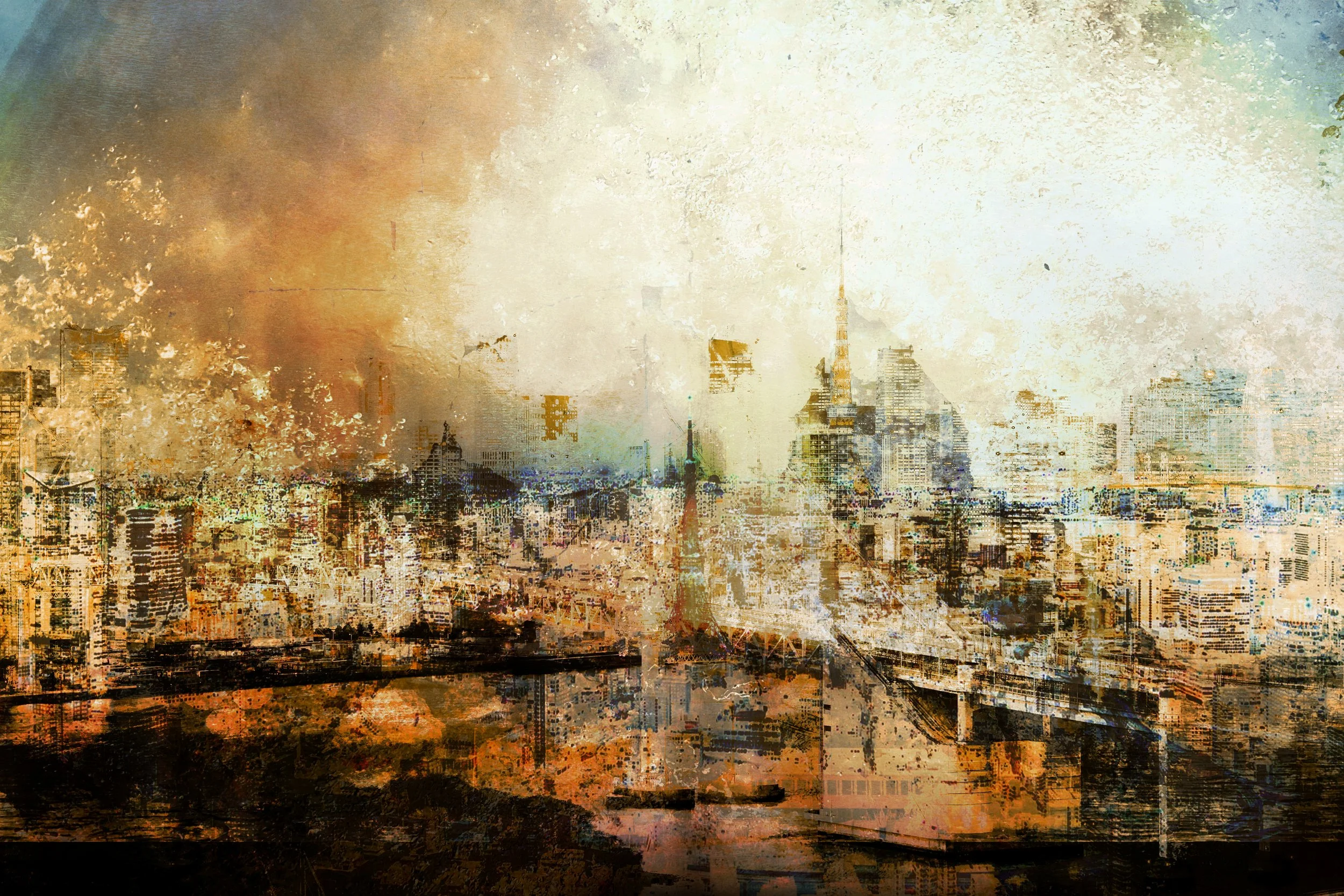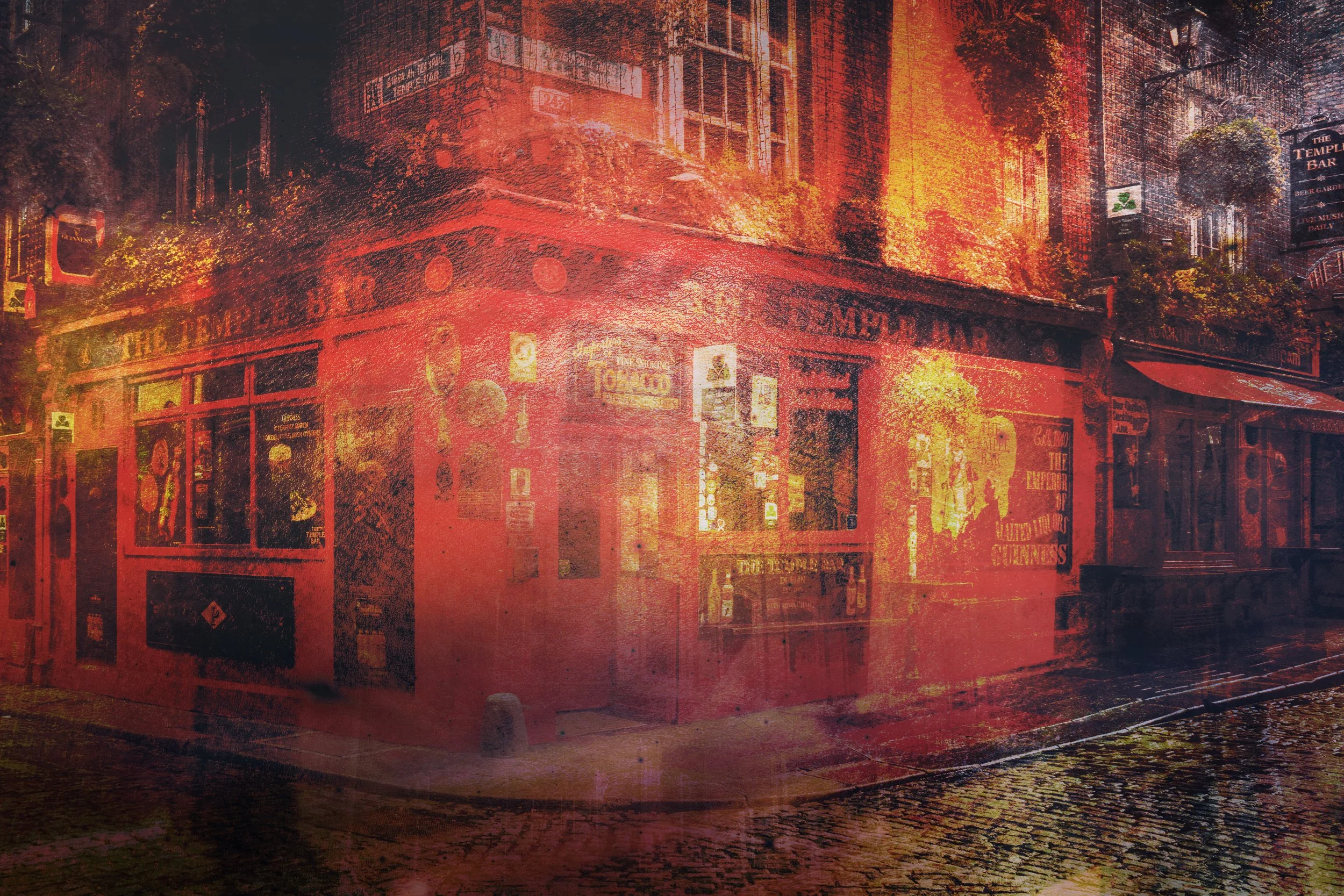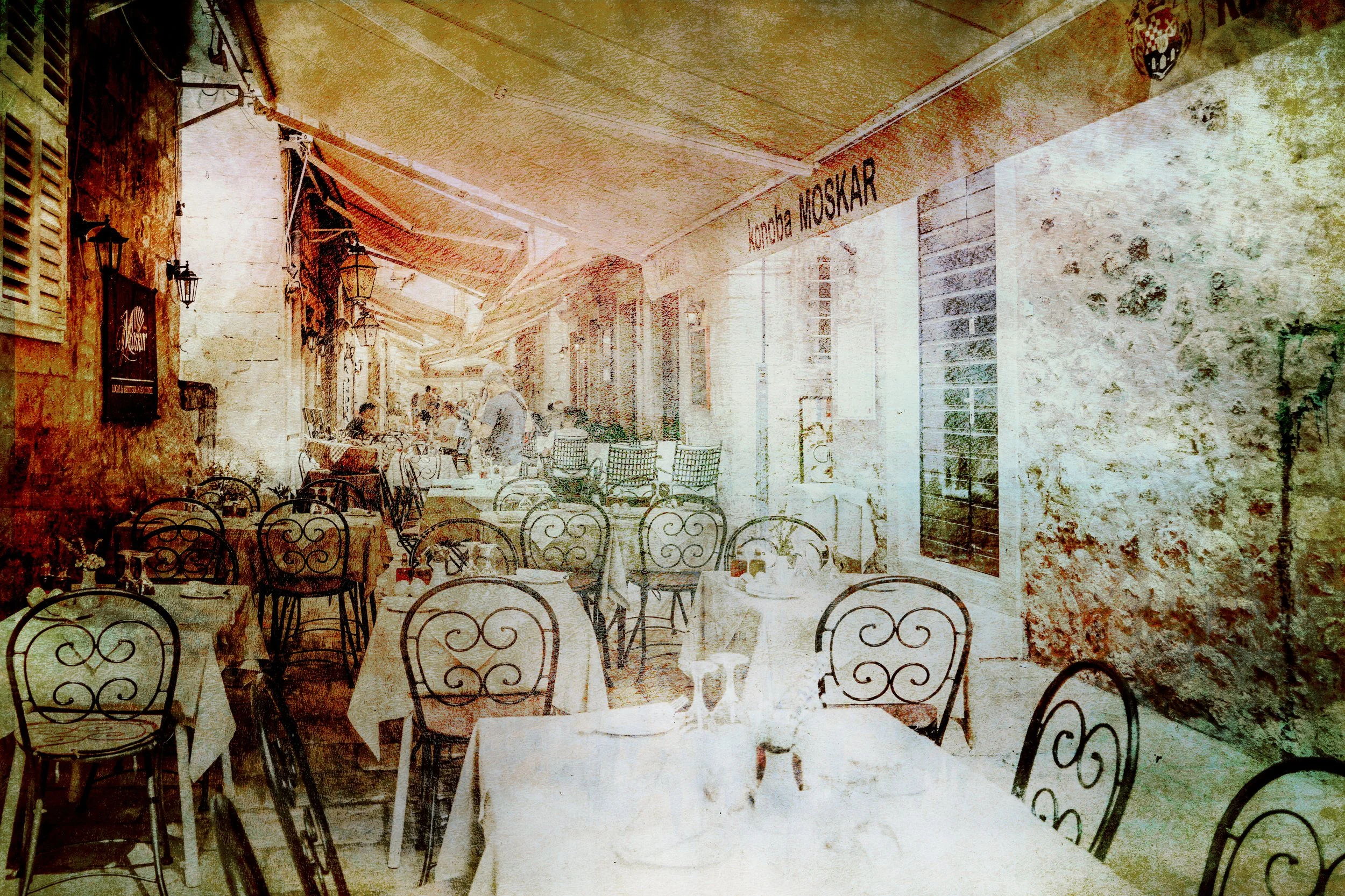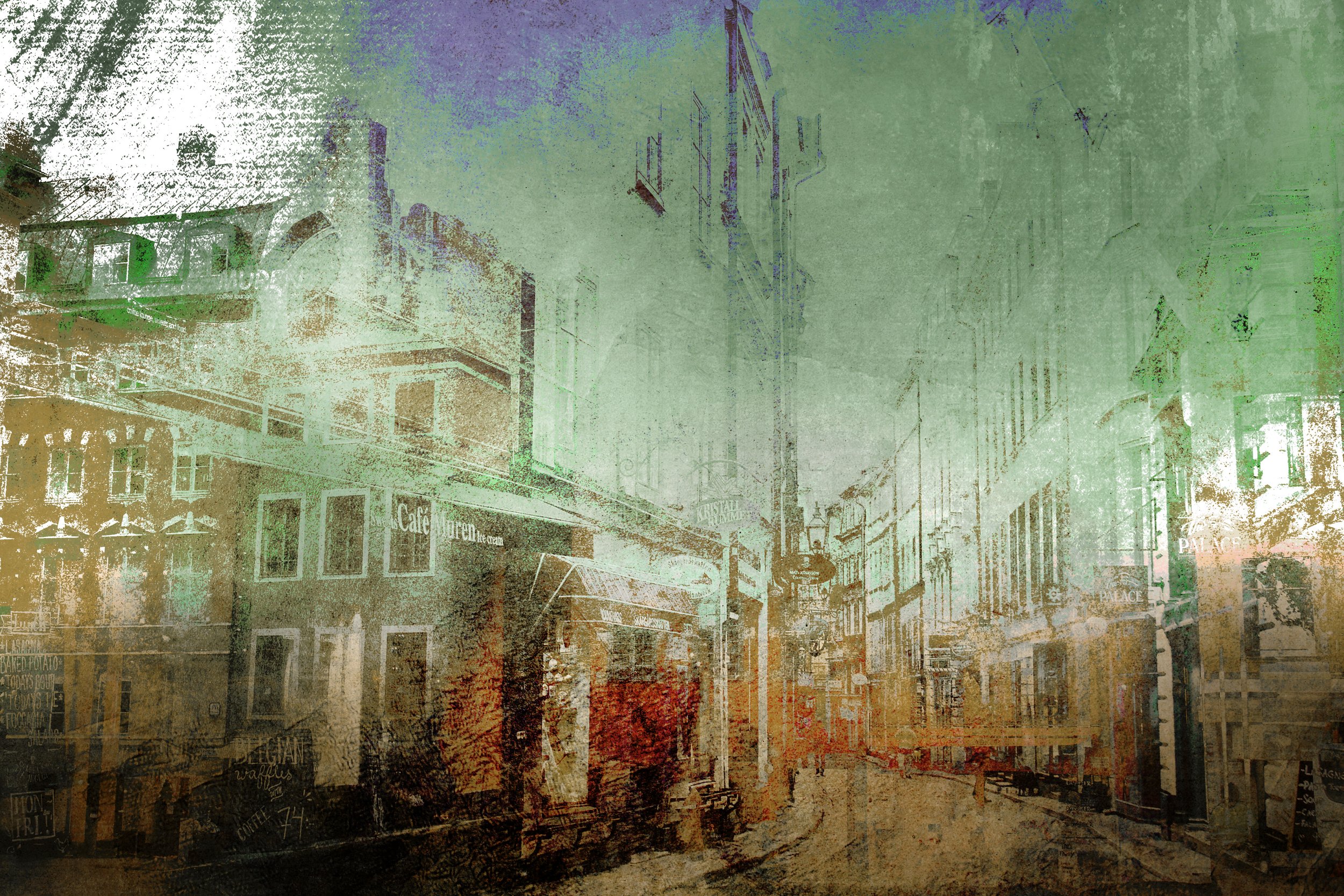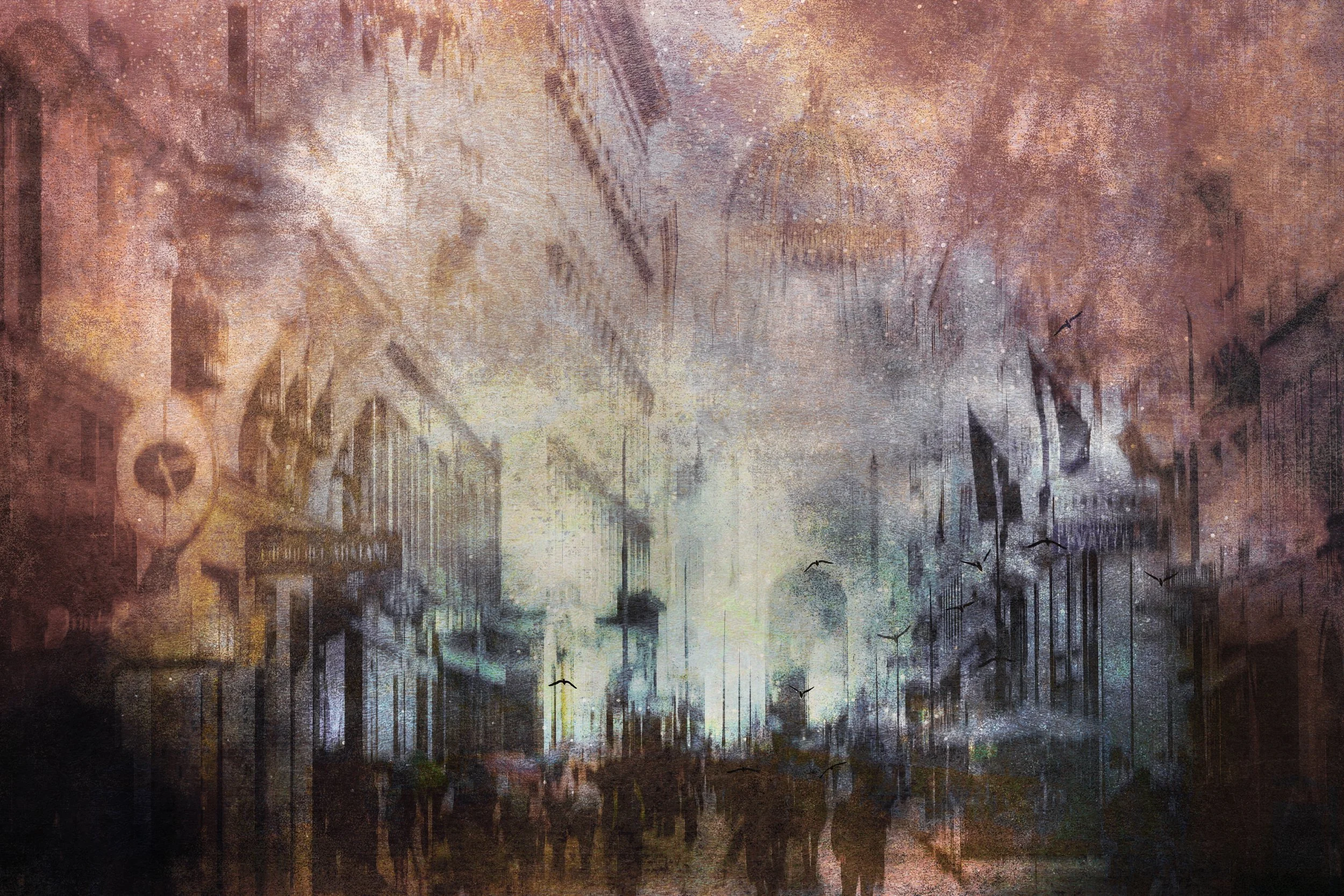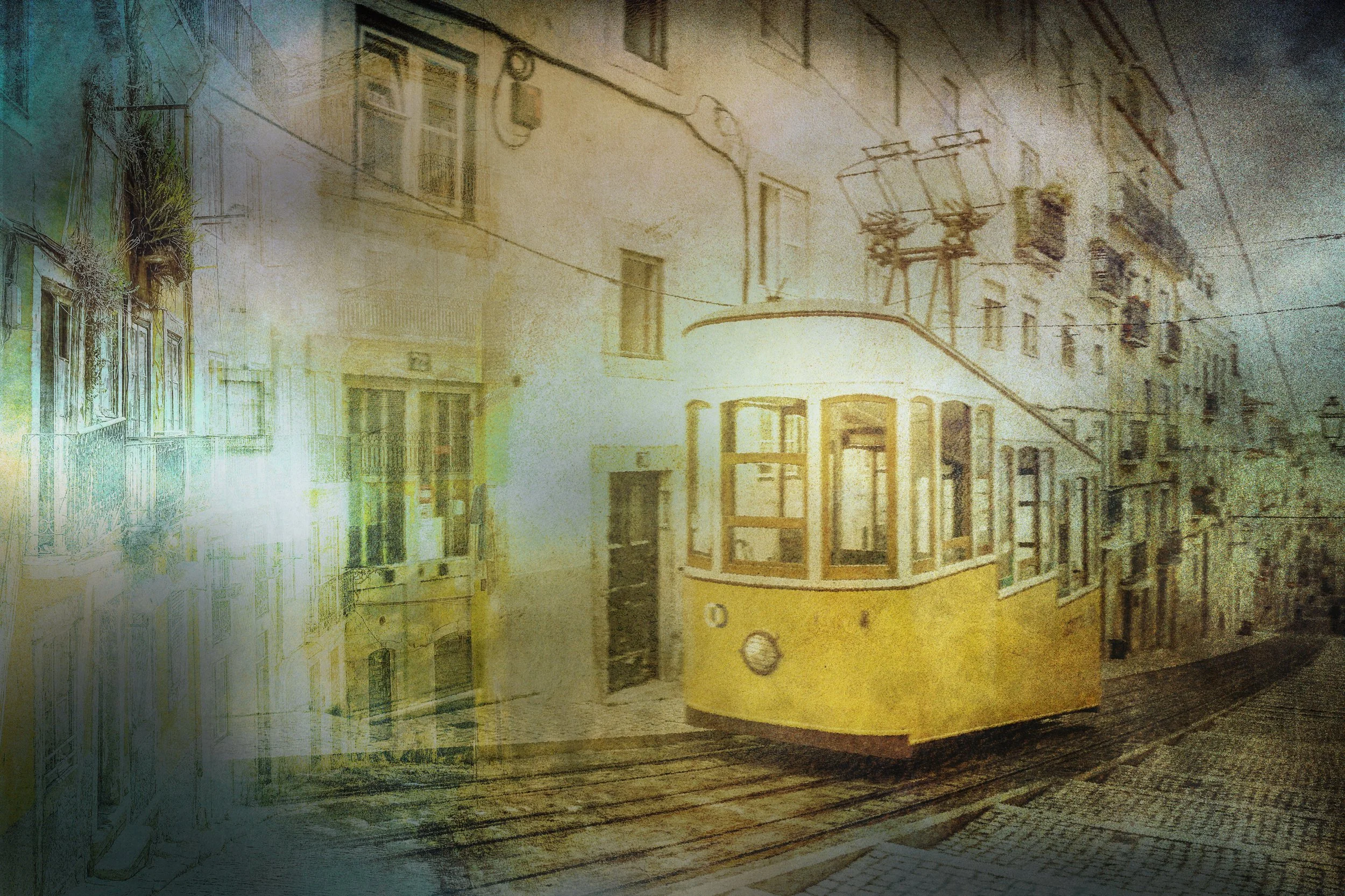
Urban Memory does not depict the city as it appears.
Instead, it reconstructs the urban landscape around the traces of memory and atmosphere that remain in a place.
Buildings and landmarks appear only as faint residues, rather than clear forms.
They serve not to describe a location, but to act as triggers for personal recall, inviting the viewer to engage with their own memories of place.
The city is presented not as a fixed scene, but as a field of time and air, allowing its presence to be felt without relying on literal representation.
The works preserve the atmosphere of a location, enabling the viewer to register the city as an inner memory, rather than a concrete image.
Urban Memory Series— Click Image for Details
Rome
This work presents the Colosseum as a field shaped by time and atmosphere. Arches and walls appear as fading structures, hovering between recognition and disappearance. The image retains the site’s presence without relying on clear outline, allowing the viewer to register the location as a memory rather than a depiction.
NYC
This work treats Times Square as a vertical field of light and noise. Towers, billboards, and figures dissolve into a dense blue haze, hovering between structure and glare. The scene registers the city’s pulse as an afterimage, where commercial signs become fragments of atmosphere rather than legible messages.
Chicago
Cloud Gate appears as a blurred, reflective mass suspended in a blue-grey haze. Towers rise behind it as softened grids, barely separating from the sky. A single figure crosses the foreground, reduced to a moving mark. The scene holds Chicago as an echo of light, weather, and passing presence.
Venice
A gondolier moves through a corridor of light, framed by a bridge and facades that dissolve into color and grain. Piers and hulls rise as vertical marks, anchoring the scene. Venice appears less as a city of canals than as a luminous channel of passage and accumulated time.
Coldoba
This work compresses a Mediterranean street into a dense tangle of facades, shadows, and wires. Balconies and arches surface as fractured lines against deep green and violet. The scene feels both crowded and hollow, holding Córdoba as a memory of narrow passages where light struggles to reach the ground.
Tokyo
Tokyo spreads across the image as a dense band of buildings under a heavy, yellowed sky. Towers and bridges intersect in a single horizontal line of light and data-like fragments. The city appears both illuminated and eroded, suspended between technological brightness and the weight of accumulated time.
Dublin
The Temple Bar glows as a block of saturated red and gold, pushing out into a dark street. Facades, signs, and windows blur into one continuous surface of light. The scene holds Dublin as a corner where building, night, and remembered music compress into a single, persistent afterimage.
Croatia
An outdoor restaurant stretches down a narrow alley, its empty tables arranged in repeating curves of iron and white cloth. Warm reds and cool greens wash across the walls and awnings. The scene holds a pause between guests: hospitality present as setting and light, rather than as visible conversation.
Stockholm
A corner café anchors the foreground, its dark facade cutting into a pale, diffused street. Buildings recede in soft rows, dissolving into green and rose light. Signs, awnings, and windows hover as traces. Stockholm appears as a bright, worn corridor where architecture and air fold into one surface.
VIenna
The image compresses a Vienna street into layered exposures where buildings, crowds, and reflected light merge. Architectural outlines remain identifiable, but motion, grain, and shifting color dominate. The work records how a city center is remembered after repeated crossings—structured by landmarks yet blurred by movement, atmosphere, and accumulated visual noise.
Lisbon
A yellow tram turns into a narrow, sloping street, its body pressed close to pale façades and hanging wires. Cobbled tracks curve downward into shadow. Lisbon appears as a moving pocket of light inside worn stone, a city remembered through the trace of this slow, mechanical ascent and descent.
Kyoto
Kyoto’s hillside temple emerges from overlapping exposures of autumn foliage and night illumination. The wooden stage, lantern-lit paths, and sloping roof remain legible, yet edges dissolve into grain and color. The work records how a famous view fractures in memory, leaving structure, light, and seasonal atmosphere rather than clear outline.


